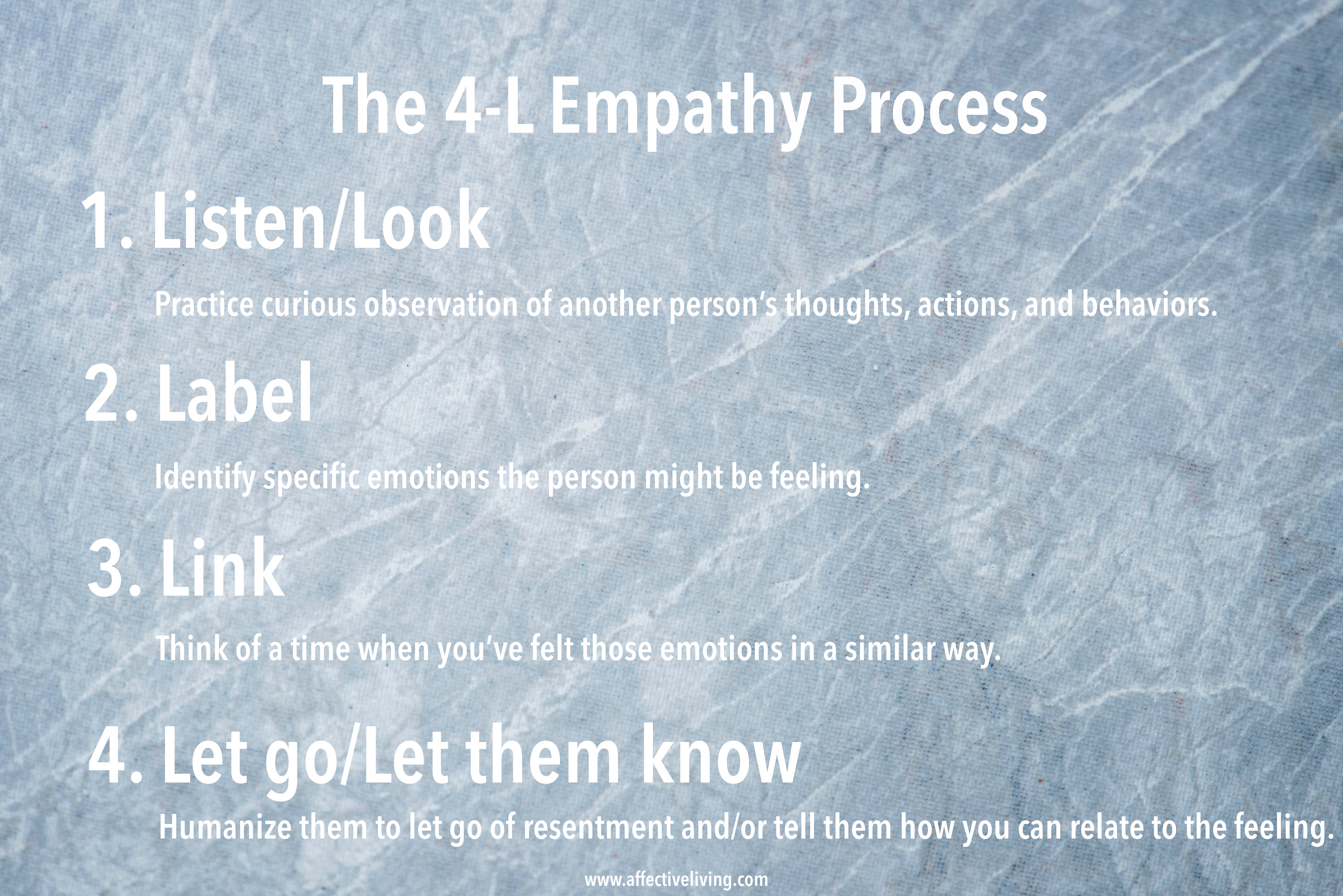Social media reveals the best and worst of humanity. Twitter specifically is a trip. I scroll through, finding great articles about creating communities and promoting kindness. Split-seconds later, I’m slapped in the eye by a vicious, arrogant and ignorant trolling attack on a person.
It’s hard not to feel like our society needs more empathy – more shared connection rather than polarized disconnection.
What if we approached teaching empathy the way we teach literacy?
We know that language develops with or without instruction. We don’t need to teach literacy in order for humans to communicate. But we do, because we can accelerate literacy, enhance clarity, broaden opportunities and create more skilled individuals.
Similarly, the ability to empathize is innate. We don’t need to teach it directly. But we should, because we can accelerate social ability, enhance clarity, broaden opportunities and create more skilled individuals.
We sometimes think that empathy is too nebulous to teach. But is it really more nebulous than the wild experience of learning to read? Just as literacy is built upon core skills that are practiced, empathy can be enhanced when we teach it as a process comprised of core skills. Here’s how that could look:
Teaching the 4L Process
We can teach empathy directly by practicing and making visible the 4 L’s

1. Listen/Look
What: Curious observation of another’s experience.
Why: Before we can empathize well, we need to develop observation skills. We need to listen without intention to correct, change, or advise. Even if we aren’t in conversation we can observe, noting nonverbals and becoming curious.
How:
- Model active listening, especially with adolescents
Ex: Practice specific listening and conversation skills, like I’ve outlined in my post, Why Teens Don’t Talk to Us.
- Use texts to encourage observation
Ex: When reading literature in ELA, students discuss what evidence they are seeing in a character’s behavior. In a social studies class, students identify the tone of writing/speaking in primary sources.
2. Label
What: Internally identifying a specific emotion a person might be feeling.
Why: Emotional shallowness is a product of vague emotional vocabulary. We use blanket statements like “upset,” “emotional,” “stressed” or whatever term is trending (“salty,” “shook,” etc.). We need to reflect and inform ourselves on the specific emotion we or someone else is feeling.
How:
- Build emotional vocabulary
Encourage adolescents to get more specific when discussing how they feel (and practice this yourself, too). One great resource is www.atlasofemotions.org
- Practice on third parties
Similar to the Listen/Look stage, fiction and nonfiction texts and media are great for practicing labeling emotions. When discussing characters or individuals, have students select from a list of specific emotions they are noticing in the text, then defend or explain their reasoning.
3. Link
What: Identify a time when we have felt a similar emotion.
Why: Emotions are universal. Shared feeling is the root of empathy. After we’ve identified an emotion someone might be experiencing, we can find commonality.
How:
- Focus on the feeling not the plot
We sometimes think we can’t relate because we haven’t experienced the same thing. Even if events aren’t universal, emotions are. Maybe my parents haven’t gotten divorced, yet I can still understand that it could make someone feel angry, isolated, anguished, hopeless. I’ve felt those before. Also, though I might not have shared the same intensity of these feelings, I can still relate and imagine what the person must be feeling.
- Prompt connection
Invite students to reflect on how they can relate to a character, a classmate, or a historical figure.
After the first three L’s, do one or both of the following:
4a) Let go
What: If we are feeling unpleasant emotions toward someone, after we’ve completed the first 3 L’s, we work to let go of that resentment
How:
- Humanize the other
By Linking to a time we’ve felt a similar emotion, we can relate around the idea of being human. Often we hold others to a level of perfection. If we recognize that they are flawed humans – just as we are – we can reduce negative thoughts. Try this activity on Compassionate Reappraisal.
4b) Let them know
What: Communicate that you can identify with what they are feeling.
How:
- Use linking statement followed by a question.
“It seems like you’re feeling (specific emotion). I’ve felt that before. Tell me what it’s like for you.”
If we seek a more connected, collaborative world, we have to stop seeing empathy as a mystical, organic phenomenon. We have to teach it, model it, and practice it overtly — with our students and our own children. Let’s build a new generation of unity by creating rather than waiting.


2 responses to “How to Teach Empathy”
This is such a valuable lesson, Chase. I am going to share this with my students’ parents as well.
Glad you found it of value!